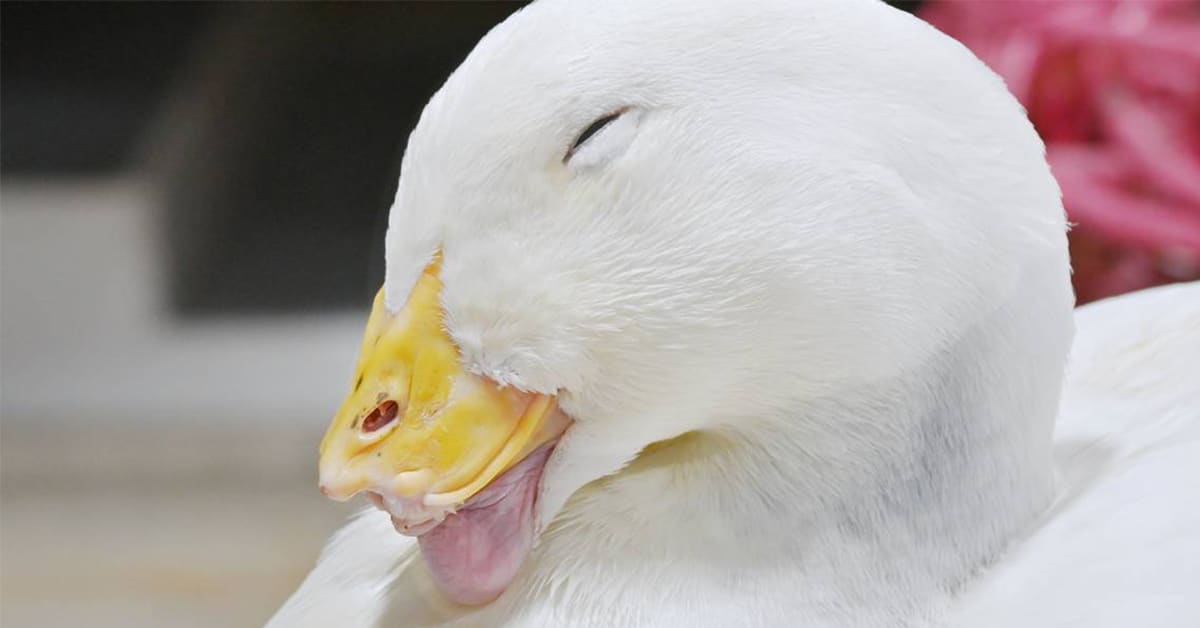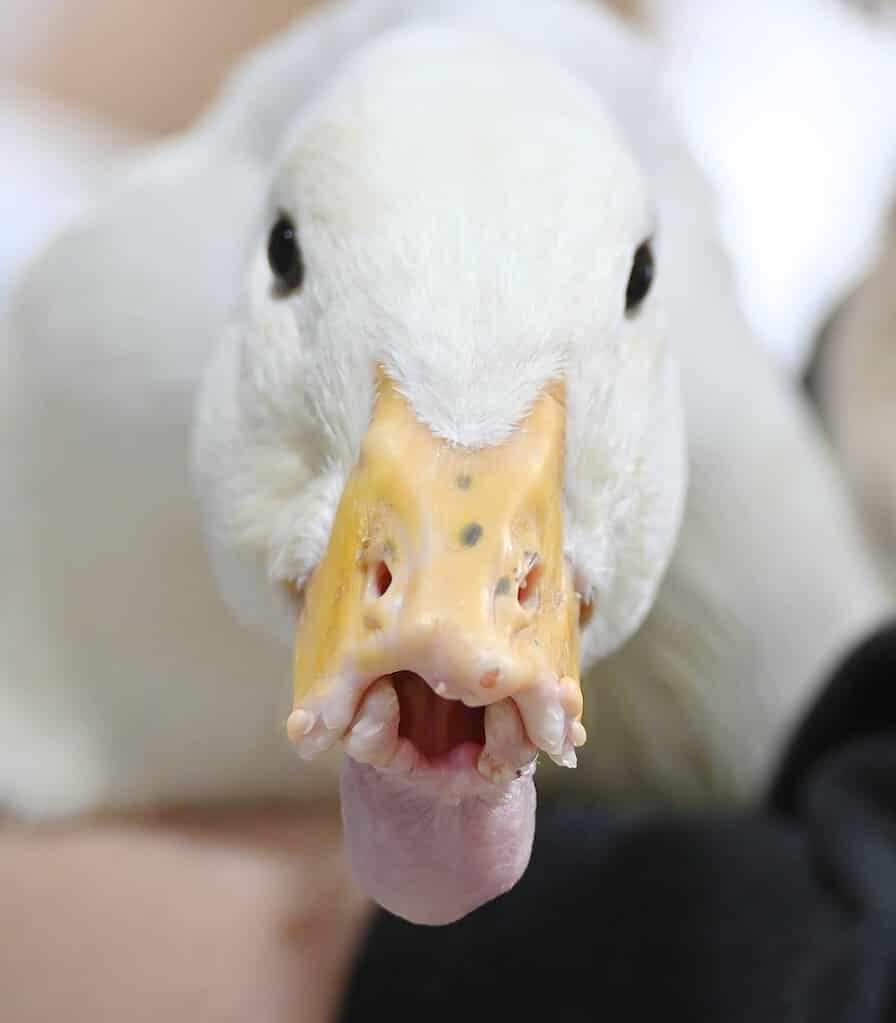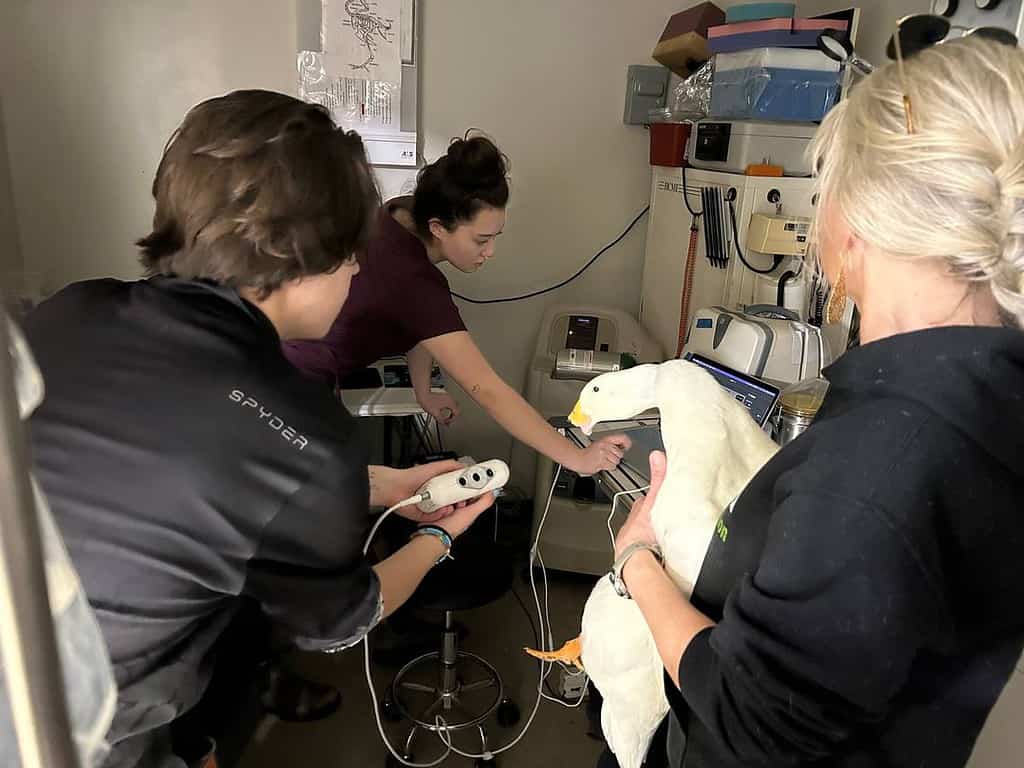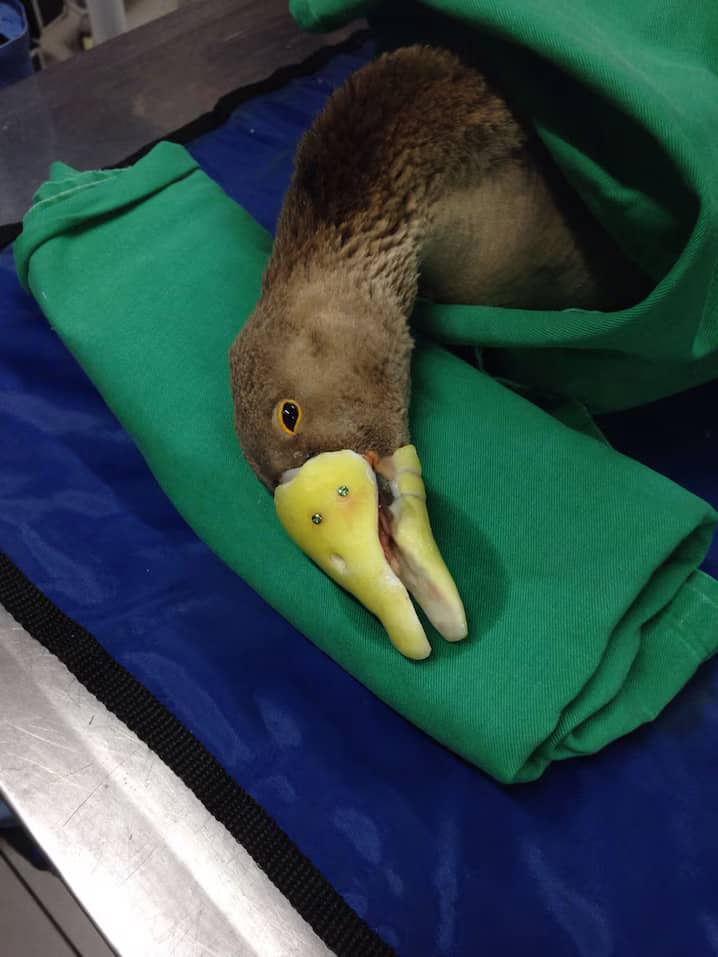
In a heartwarming blend of technology and compassion, a unique project is underway at a Texas wildlife rehabilitation center, promising a better life for an injured duck named Polly. The unfortunate bird arrived at the All Things Wild center in Austin with more than half of her bill gone. Her serious condition hindered her ability to eat, drink, and maintain her feathers. But thanks to a group of college students and the marvels of 3D printing, Polly is on the verge of receiving a life-enhancing prosthetic bill.
Polly’s bill is believed to have been severely damaged in an encounter with a snapping turtle. The injury has been extremely challenging for the Pekin duck. Yet, despite all of this, six months after she was discovered, Polly has adapted to her harsh circumstances with inspiring resilience. For her caretakers at All Things Wild, this made her even more lovable.
“She kind of implanted herself in everybody’s lives here,” said Jessica Green, a member of the All Things Wild team. “She doesn’t even like people talking over her … She’ll just start quacking away all day.”
“She’s adapted beautifully. She really can eat anything,” said Green, but added, “They preen themselves . . . and she can’t do that. She can’t get all those excess feathers off,” highlighting that Polly is still suffering major difficulties, despite her remarkable grit.
Making Polly a new bill

Engineering students at Southwestern University have gotten word of Polly and her inspiring story. Led by Melanie Hoag, an Instructional Technology at Southwestern, the team has embarked on a mission to create a prosthetic bill that mirrors the function and appearance of a natural one.
The researchers have scanned the bills of healthy ducks and made a replica of Polly’s remaining bill. They want to 3D print a perfectly fitting prosthetic using these scans — actually, two prosthetics since Polly is missing both the top and bottom of her bill.
“It’s just been a really interesting way to think about what can be done with 3D printing to really enhance life for these other animals,” Hobgood told McClatchy News.

The process has not been without its challenges. It’s not easy to make detailed scans of the bill’s interior and find materials that replicate the texture and weight of a natural bill. Yet, the students are making significant strides, leveraging polylactic acid (PLA) filament for its non-toxic properties to craft the prosthetic.
With the prototype nearing completion, the next steps involve veterinarians examining the prosthetic to ensure a perfect fit for Polly. Two types of adhesives are under consideration to attach the new bill securely.
Yet even with an advanced prosthetic, Polly will remain under the care of All Things Wild. She wouldn’t be able to survive in the wild post-recovery even with her new bill.
Animal prosthetics are a growing field
Still, this project transcends Polly’s individual story. It’s just one of many examples illustrating the broader potential of 3D printing technology in wildlife rehabilitation. In 2020, an injured pet goose also got a 3D-printed prosthetic bill after it lost it in a scuffle with a raccoon. In 2016, another goose named Vitória was dropped off at an animal rescue center near São Paulo with most of her bill missing. Paolo Miamoto, a dentist specializing in facial and dental reconstruction, used 3D printing to give Vitória her smile back.

Other recipients of bill prosthetics include a hornbill in Singapore and a bald eagle from Alaska named Beauty.
Of course, animal prosthetics aren’t just about bills. Stubbs the alligator lost his tail in a fight with another gator. Now there’s a 3D-printed silicone tail attached to Stubbs’ stub. Fred the tortoise received a prosthetic shell. Countless other dogs, cats, and even lizards have received limb prosthetics made to perfectly fit their bodies using 3D printing technology.
These developments have been absolutely transformational. Before 3D printing, many animals would have to be put down because their mobility issues would have made their lives unbearable. Now, technology is granting them a new lease on life.


